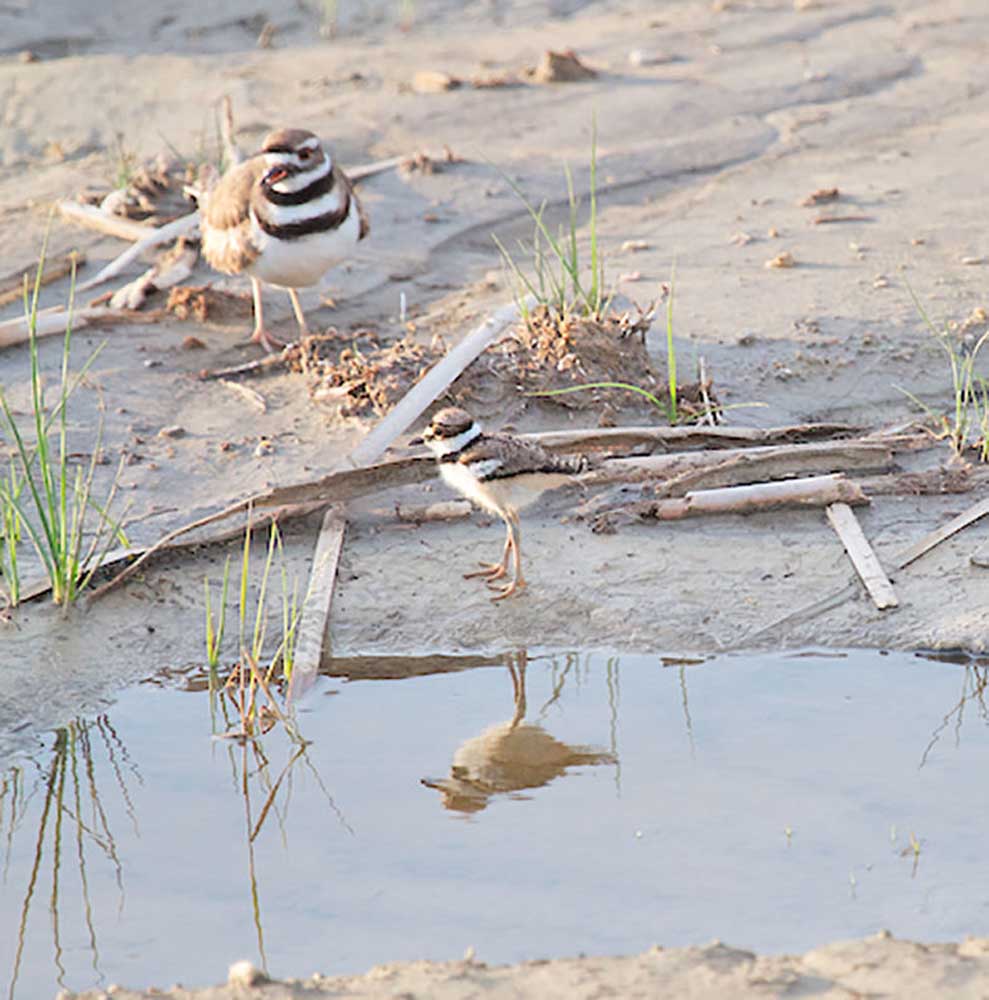Birding: Kildeer — The bird of everywhere!
Published 11:04 am Monday, January 21, 2019

- The downy baby has only a single breast band where as its parent has two.
Lately, on my travels up and down the Peninsula, I see killdeer everywhere. They seem to have taken up residence in the short-grass fields, on mudflats when the tide is out, on roadsides, on the docks of our harbors, in wetlands, on lawns, gravel parking lots and driveways. I am sure they are elsewhere as well.
Trending
Sibley (2014) notes that, “the killdeer is common and widespread on any open ground.” He also indicates that it is not generally found near water. In fact, the killdeer is the shorebird least likely to be found near water.
The king tides may have changed all that. It is known that when the wetlands become flooded during king tides that food for the birds tends to be more plentiful. The higher than usual water level brings seeds, invertebrates etc. to the surface. Shorebirds, ducks and other waterfowl love to feast in these wetland areas during high tide times. This in turn brings on the bald eagles and other raptors. It is interesting to watch the food chain hierarchy in action.
Killdeer are tall, rather slim plovers with a small head, small bill, long tail and a dark, double breast band. When flying, their rufous tail and rump are always visible. Adults are slightly larger than an American robin. Young killdeer, at the downy stage, only have a single breast band just like other small plovers.
Trending
Killdeer are adept at luring intruders, especially humans, away from their nest by using the broken wing act. They bob up and down then fly a short distance feigning injury all the while repeatedly giving a high rapid trill, which they also sing out when nervous. Their namesake call is, “killdeer,””killdeer,” “killdeer.”
Their nests are vulnerable because they are not really well constructed or well placed. Placement is usually in the open and often close to human activity. The nest is basically just a scrape on the grass, earth or gravel where it is there for all to see! Several scrapes are made in the same area. This is thought to be done to confuse predators. After one of the many scrapes has been selected as the nest, rocks, bits of shell, sticks, and trash are often added to it (Cornell Ornithological Laboratory).
The killdeer I observed in my wetland area was comprised of a small flock of four. The birds were tip-toeing through and over the small grassy mounds in the wetland searching for and hoping to feast on delicacies such as seeds and invertebrates including snails, crayfish, grasshoppers, beetles, and aquatic insect larvae. Normally, killdeer have a run-stop-pluck feeding style, just like that of other plovers. Tip-toeing is very strange behavior for a plover. It must have worked though. The small flock stayed for the day and continued its feeding antics as long as there was water around the grassy mounds.
The killdeer seems to be the bird of everywhere! How many different places and how many different habitats have you seen it in? Look for small flocks of birds that are running-stopping and plucking, and maybe you will see one or two doing the tip-toe move!
”Common Birds of the Long Beach Peninsula,” by Kalbach and Stauffer, is available from the Chinook Observer, Bay Avenue Gallery, Time Enough Books and the Long Beach Visitors Center.









